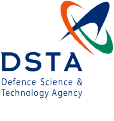Why choose Photoshop?
Photoshop is essential for creating and editing images used across various fields, including graphic design, marketing, photography, web design, video editing, animation, and advertising. Its versatility makes it suitable for both print and digital outputs.
How can Photoshop training benefit me?
Enrolling in our Photoshop courses, available in-person or online, will enhance your skills, whether you're a beginner or an experienced user. You'll learn to produce engaging and eye-catching content for various purposes, from social media posts to website designs.
What skills are enhanced through Photoshop courses?
Our courses cover a wide range of Photoshop skills, including working with layers and selections, retouching, colour correction, compositing, and masking. These skills are crucial for creating stunning visual content for both print and web projects.
What does the Photoshop Essentials course cover?
The Photoshop Essentials course teaches the fundamentals of image editing and graphic creation. It's suitable for beginners looking to build a strong foundation in Photoshop, covering key features and basic techniques.
Who is the Photoshop Advanced course suitable for?
The Photoshop Advanced course is designed for regular users looking to extend their knowledge and skills. It covers advanced techniques, real-world applications, and special effects creation to enhance your creative capabilities.
Do you offer government-funded Adobe Photoshop training courses?
While we do not provide government-funded courses, you may qualify for reimbursement through government grants for workplace training to cover the cost of your Adobe Photoshop training.
What prerequisites do I need for Nexacu's Adobe Photoshop training courses?
Our Adobe Photoshop training courses are designed to cater to participants of varying skill levels. While some courses may have recommended prerequisites, no specific requirements are needed for most introductory-level courses. Our instructors will guide you through the necessary concepts and ensure you have a solid foundation in using Adobe Photoshop software.
What are the benefits of completing an Adobe Photoshop training course with Nexacu?
By completing our Adobe Photoshop training courses, you will gain the skills and confidence to effectively use Adobe Photoshop software. Our courses are taught by experienced instructors who will guide you through hands-on exercises and real-world examples, enabling you to apply your knowledge immediately. You will learn time-saving tips, best practices, and advanced techniques to enhance your productivity and create professional-quality output.
Is certification provided upon completing the Adobe Photoshop training?
Yes, upon successful completion of our Adobe Photoshop training courses, you will receive a certificate of achievement. This certification validates your proficiency in using Adobe Photoshop software and can be a valuable asset when demonstrating your skills to clients, employers, or colleagues.
Why is Adobe Photoshop training important for businesses and organisations?
Adobe Photoshop software is widely used in various industries, including graphic design, marketing, advertising, and media production. Having employees with strong Adobe Photoshop skills can significantly enhance the quality and efficiency of your organization's visual content creation, branding, and marketing efforts.
What is the role of employee training in Adobe Photoshop software?
Employee training in Adobe Photoshop software plays a crucial role in empowering individuals to maximize their creative potential and productivity. It enables employees to efficiently use Adobe Photoshop tools, unlock advanced features, and explore creative possibilities. Well-trained employees can create visually appealing content, design professional marketing materials, and effectively communicate ideas through multimedia. Adobe Photoshop training also fosters collaboration and streamlines workflows within teams, resulting in improved efficiency and output quality.
How much is Adobe Photoshop training?
The cost of Adobe Photoshop training at Nexacu varies depending on the specific course you are interested in. We offer a range of Adobe Photoshop courses designed to cater to different software applications and skill levels. To find out the exact cost of a particular course, we recommend visiting the respective course page on our website. There, you will find detailed information about the course content, duration, and pricing.
What benefits can businesses gain from Adobe Photoshop training?
Adobe Photoshop training provides businesses with a competitive edge by enabling employees to create visually stunning designs, compelling marketing materials, and engaging multimedia content. By enhancing employees' Adobe Photoshop skills, organizations can streamline their creative processes, produce high-quality deliverables, and effectively communicate their brand identity. Adobe Photoshop training also empowers businesses to take advantage of the latest software features and stay up to date with industry trends, ensuring they can meet evolving customer expectations and stand out in the market.

 Australia
Australia Singapore
Singapore
 Hong Kong
Hong Kong
 Malaysia
Malaysia
 Philippines
Philippines
 Thailand
Thailand
 Indonesia
Indonesia























